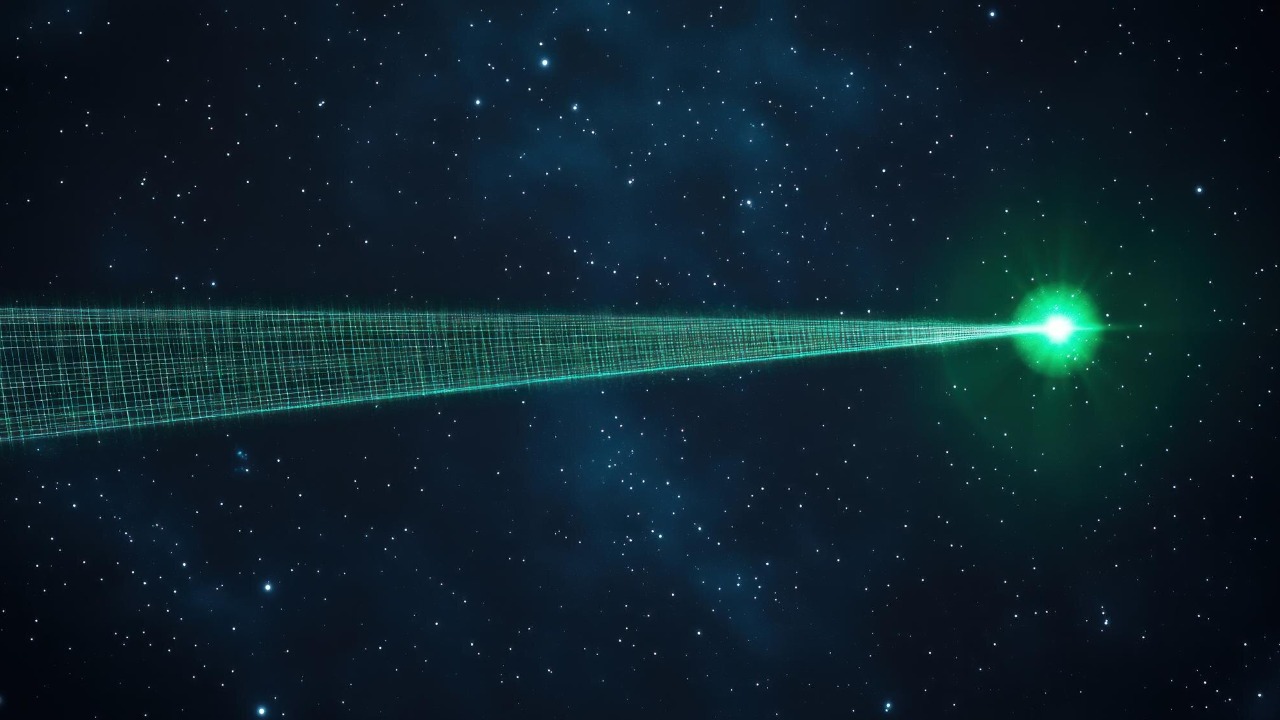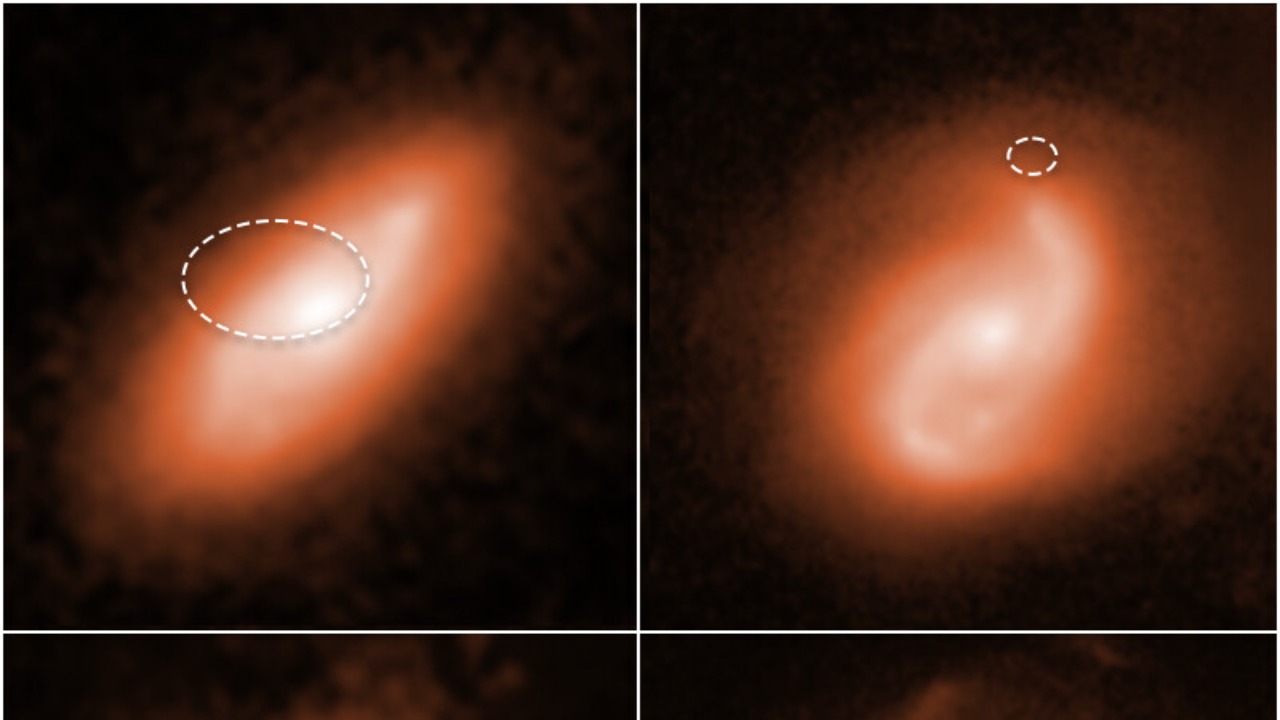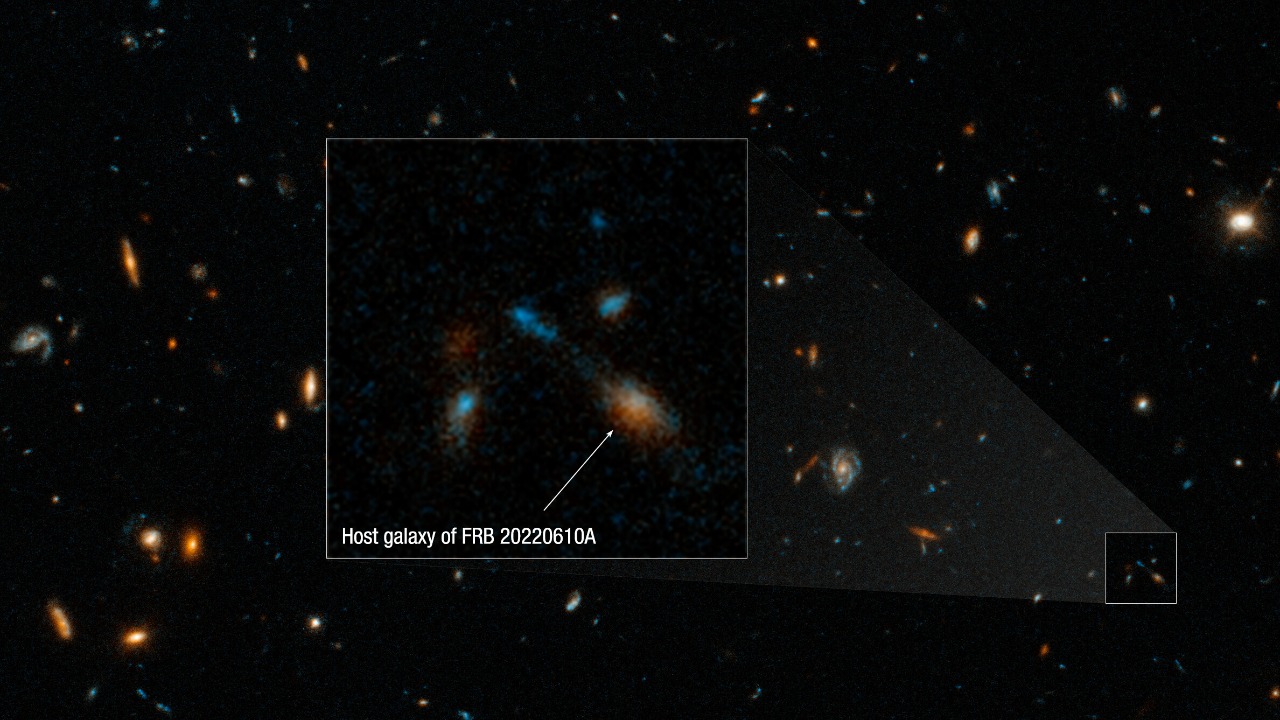
Recently, astronomers have detected a repeating phenomenon of laser-like bursts emanating from a distant galaxy, sparking intrigue and curiosity in the scientific community. These bursts, known as Fast Radio Bursts (FRBs), are characterized by their intense and brief emissions, and their origin remains one of the most compelling mysteries in astrophysics. The discovery adds a new layer of complexity to our understanding of the cosmos and challenges existing theories about the universe.
Understanding Fast Radio Bursts (FRBs)

Fast Radio Bursts are enigmatic astronomical phenomena characterized by intense, millisecond-duration radio waves originating from unknown cosmic sources. These bursts are typically detected at radio frequencies, showcasing a wide range of dispersion measures, which indicate that they have traveled vast distances across the universe. The energy emitted by a single FRB can be comparable to the energy produced by the sun in an entire day, highlighting their extraordinary nature.
The first FRB was discovered in 2007, marking the beginning of an exciting era in radio astronomy. This discovery prompted a surge of interest and subsequent research, leading to the identification of hundreds of FRBs over the years. Among these, some have been observed to repeat, adding another layer of intrigue to their already mysterious nature. These repeating FRBs suggest underlying mechanisms that are periodic or continuous, offering valuable clues about their origins.
Various theories have been proposed to explain the origins of FRBs. Some suggest they are the result of catastrophic cosmic events, while others propose more continuous processes. Hypotheses include magnetars—neutron stars with intense magnetic fields—that could emit radio waves through starquakes or magnetic reconnection events. Alternatively, some speculate about the possibility of extraterrestrial technology as a source, though this remains speculative. The repeating nature of certain FRBs provides critical data that help refine these theories, narrowing down the potential sources to those capable of producing periodic emissions.
The Recent Discovery of Repeating Laser-Like Bursts

The recent detection of repeating laser-like bursts was made possible using state-of-the-art telescopes and observational techniques at renowned facilities such as the Keck Observatory. These bursts exhibit a precision reminiscent of a laser, setting them apart from other known cosmic phenomena. Such characteristics not only pique the interest of astronomers but also highlight the need for advanced technology to capture these fleeting events.
The significance of repetition in these bursts cannot be overstated. Repeating signals suggest a periodic or consistent source, offering astronomers a unique opportunity to study their origins over extended periods. This repetition allows researchers to analyze patterns and potential causes, providing essential data that can help unravel the mystery of their source. Understanding these patterns could lead to breakthroughs in identifying the physical processes or objects responsible for these enigmatic signals.
Potential sources of these bursts range from exotic astrophysical objects and processes, such as binary star systems undergoing rapid changes or interactions involving black holes, to more speculative possibilities like artificial origins. While the latter remains a topic of debate, it continues to stimulate discussion among scientists, driving further research and exploration into the unknown aspects of our universe.
Technological Advances in Detection

The detection and analysis of FRBs rely heavily on modern telescopes equipped with high sensitivity and resolution. Facilities like the Keck Observatory utilize cutting-edge technology to capture detailed data of these bursts, enabling astronomers to study them with unprecedented precision. These advanced telescopes are essential for discerning the unique characteristics of FRBs, distinguishing them from other cosmic events.
Data analysis techniques have also seen significant advancements, with sophisticated algorithms and software playing a crucial role in sifting through vast amounts of data to identify and characterize bursts. The integration of machine learning and artificial intelligence further enhances detection capabilities, allowing for more efficient processing and interpretation of the complex signals associated with FRBs.
Despite these technological advancements, the transient nature of FRBs presents inherent challenges in pinpointing their origins. Limited observational windows and interference from other cosmic sources complicate the detection process, requiring continuous improvements in both technology and methodologies. Overcoming these challenges is crucial for advancing our understanding of these mysterious bursts and their implications for the broader universe.
Implications for Astrophysics and Beyond

Studying FRBs holds immense potential for enhancing our understanding of the cosmos. These bursts can provide insights into the structure and behavior of the universe, including the distribution of matter and dark energy. By analyzing FRBs, astronomers can refine models of cosmic evolution and the lifecycle of stars, offering a deeper comprehension of the universe’s fundamental processes.
The discovery of FRBs also raises broader scientific and philosophical questions. It challenges scientists to reconsider established theories and explore new paradigms in astrophysics. The potential existence of intelligent extraterrestrial life, while speculative, prompts us to contemplate the nature of communication and the possibility of contact with other civilizations. Such considerations drive interdisciplinary research, fostering collaborations across fields such as physics, astronomy, and engineering.
Future research directions emphasize the need for continued monitoring and coordinated global efforts to unravel the mysteries of FRBs. Collaborations among international observatories and research institutions are essential for developing new technologies and methodologies that can enhance detection and analysis capabilities. As we continue to explore these enigmatic bursts, the possibilities for discovery extend beyond the realm of astrophysics, influencing our understanding of the universe and our place within it.